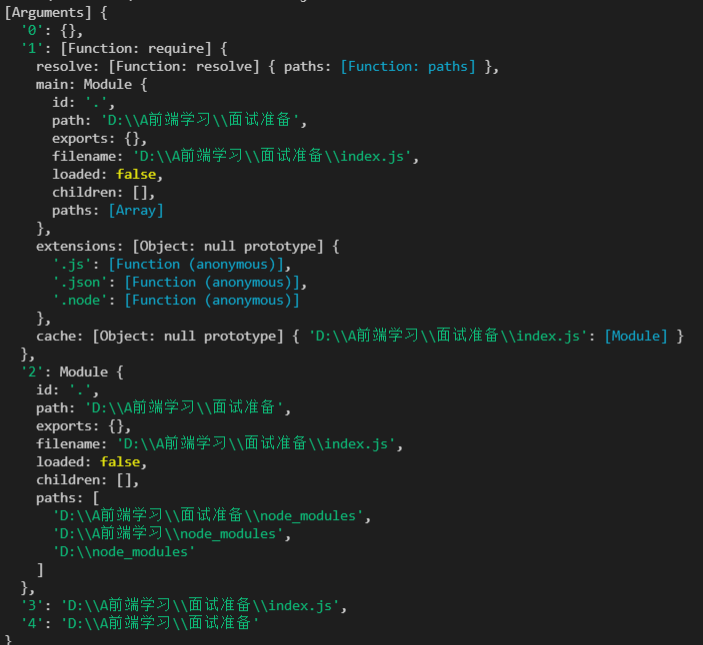arguments
arguemnt是一个类数组。
特点:
- 有length属性
- 可以通过index来遍历
- 可以通过index索引来获取值
- arguments.callee()获取当前函数
arguements的基本使用
arguments:类数组对象中(长的像是一个数组, 本质上是一个对象)
js
//1.参数长度
console.log(arguments.length);
//2,.根据索引值获取某一个参数
console.log(arguments[2]);
//3.callee获取当前arguments所在的函数
console.log(arguments.callee);arguments转为数组
js
function foo() {
console.log(arguments);
//1.遍历转化
let arr = [];
for (const item of arguments) {
arr.push(item);
}
console.log(arr);
//2.slice方式
const arr2 = Array.prototype.slice.call(arguments);
const arr5 = [].slice().call(arg)
console.log(arr2);
//3.es6以后
const arr3 = [...arguments];
const arr4 = Array.from(arguments);
console.log(arr3, arr4);
}箭头函数没有arguments
箭头函数没有arguments,在箭头函数中它会向上层作用域查找argments。
箭头函数中是通过剩余参数来获取参数的
js
var baz = (one, ...args) => {
console.log(args);//[2,3,4]
}
baz(1, 2, 3, 4);浏览器中:全局作用域是没有arguments的。
node中:一个js文件相当于一个模块,是由arguments的。

slice方法实现
slice方法:slice(start,end)是数组的一个内置方法,遍历数组,返回新的数组。
slice()函数的内部实现:
js
Array.prototype.lzslice = function (start, end) {
const args = this;
start = start || 0;
end = end || this.length;
let arr = [];
for (let i = start; i < end; i++) {
arr.push(args[i]);
}
return arr;
};